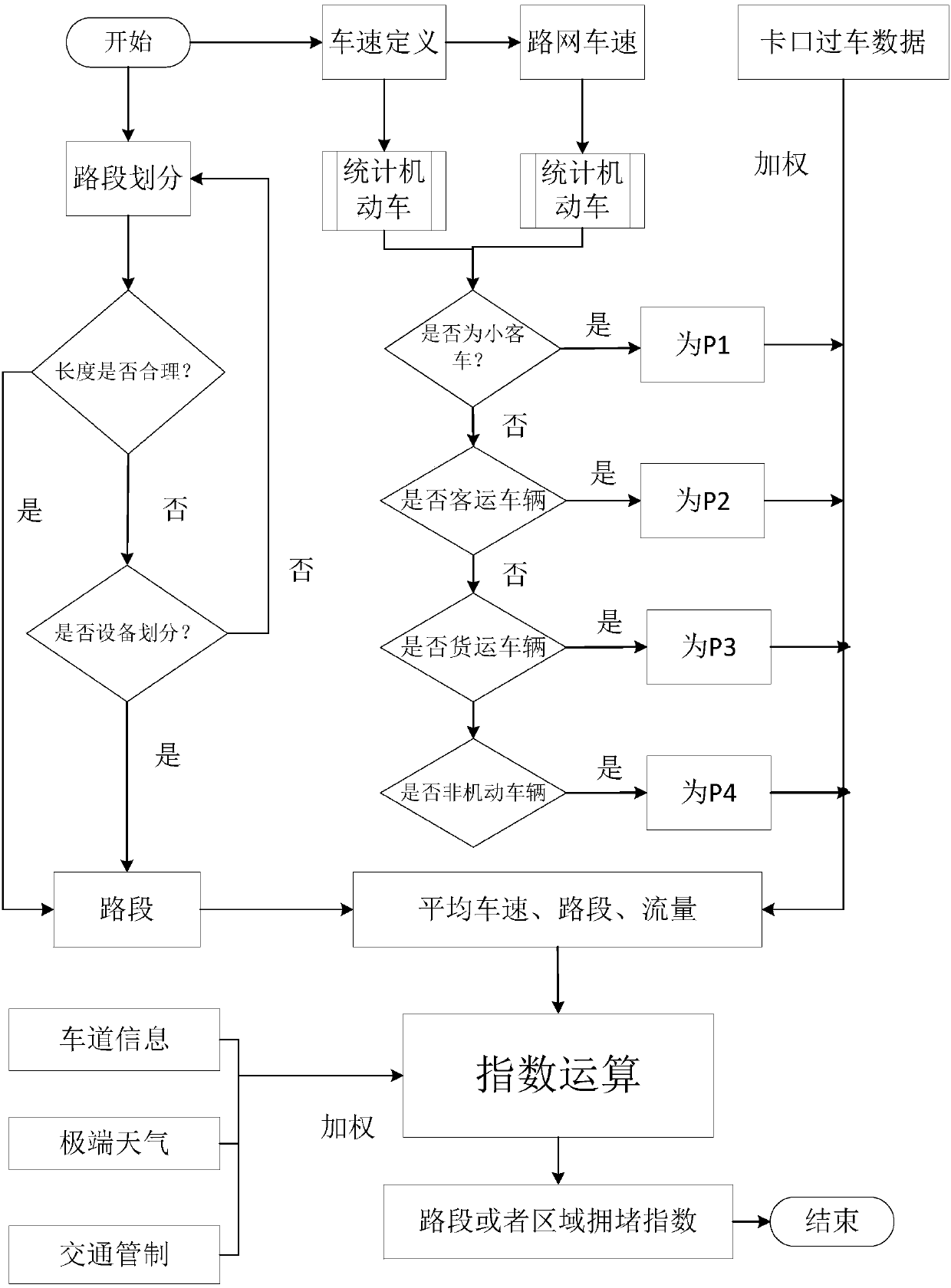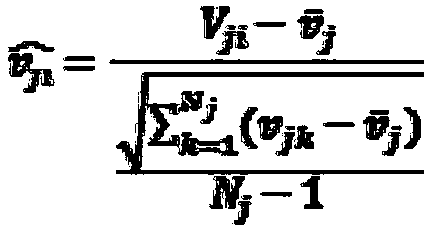Urban road congestion index-based calculation method
A technology of congestion index and calculation method, which is applied in the traffic control system of road vehicles, traffic flow detection, instruments, etc., can solve the problems of not being able to accurately reflect the actual feeling of traffic congestion, large differences and unable to truly reflect the public's feeling, etc., so as to improve travel The effect of efficiency
- Summary
- Abstract
- Description
- Claims
- Application Information
AI Technical Summary
Problems solved by technology
Method used
Image
Examples
Embodiment Construction
[0047] All features disclosed in this specification, or steps in all methods or processes disclosed, may be combined in any manner, except for mutually exclusive features and / or steps.
[0048] Any feature disclosed in this specification (including any appended claims, abstract and drawings), unless expressly stated otherwise, may be replaced by alternative features which are equivalent or serve a similar purpose. That is, unless expressly stated otherwise, each feature is one example only of a series of equivalent or similar features.
[0049] The specific implementation manners of the present invention will be described in detail below in conjunction with the drawings and embodiments.
[0050] In the following detailed description, numerous specific descriptions are set forth for purposes of explanation in order to provide a thorough understanding of the disclosed embodiments, however, it can be evident that one or more embodiments can be practiced without these specific des...
PUM
 Login to View More
Login to View More Abstract
Description
Claims
Application Information
 Login to View More
Login to View More - R&D
- Intellectual Property
- Life Sciences
- Materials
- Tech Scout
- Unparalleled Data Quality
- Higher Quality Content
- 60% Fewer Hallucinations
Browse by: Latest US Patents, China's latest patents, Technical Efficacy Thesaurus, Application Domain, Technology Topic, Popular Technical Reports.
© 2025 PatSnap. All rights reserved.Legal|Privacy policy|Modern Slavery Act Transparency Statement|Sitemap|About US| Contact US: help@patsnap.com



